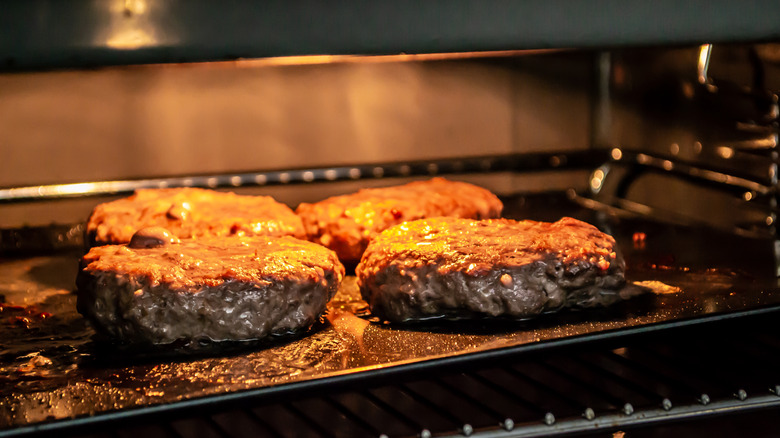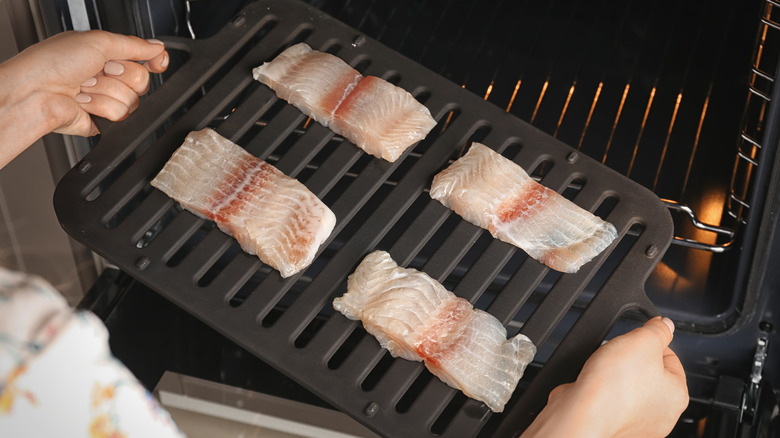The Right Way To Adjust Oven Racks When Broiling A Cut Of Meat
The broiler is the element typically located at the top of the oven that's capable of producing extremely high, direct heat, like an upside-down grill, but in the comfort of your kitchen. And it's a great tool to have at your disposal, especially if you want to cook things quickly; but to get the best results, you'll need to know how to adjust the racks in your oven based on what you're broiling up.
Oven racks are those slotted, metal trays that slide into guides. These guides allow you to either adjust the height of what you're baking/roasting/broiling or provide the option of filling more than one rack at a time, so you're able to cook multiple things at once. The most common setting for broiling is the top rack, which creates about a 3-inch gap between the pan surface and the heating element. While this height setting is ideal for cooking thinner cuts of meat, the slot just below it is better for thicker cuts. The second position down creates about a 5-inch gap, and while it will still provide a nice sear to whatever you're cooking, the extra distance from the heat helps it cook more evenly.
Most ovens will have the standard racks already installed, so you can play with the adjustments. Some ovens, however, come with a broiler drawer, which is not adjustable, and really only conducive to broiling thinner cuts.
The best cuts for meat to broil
You can broil just about anything, from fruits to vegetables to desserts, but the best thing to get under the heat is meat. As mentioned, it's thin cuts that really shine, but when we say thin, we're not talking paper thin. Thinness under the broiler really means anything that is 1½ inches or thinner. This includes steaks like ribeye and T-bones, beef burger patties, turkey breasts, or whole flattened chicken.
Fish is another excellent option to cook under the broiler. Those with naturally high levels of fat, like salmon, mackerel, or swordfish are best for broiling because that fat offers a protective layer against the heat of the element. This is insurance for beautifully browned but not overcooked fish. You can cook leaner, more delicate white fish, like cod or tilapia, but they are best broiled when they have a covering of bread crumbs or oil, as this makes it less likely they'll dry out.
Anything thicker, like a tomahawk steak or lamb loin, is better broiled on the second rack. It can even be your go-to guide if you're new to broiling, as it will give you a bit more wiggle room with cuts that are equally suited to the top slot. This height should still give anything you put on the pan a wonderful level of caramelization, and cook it fairly quickly.

